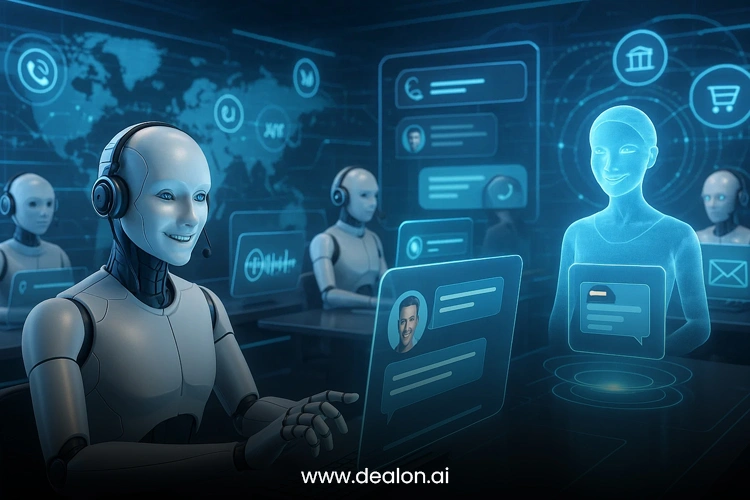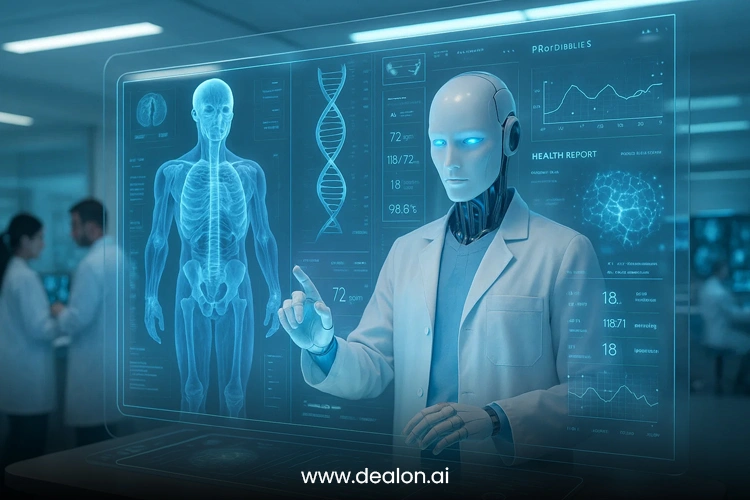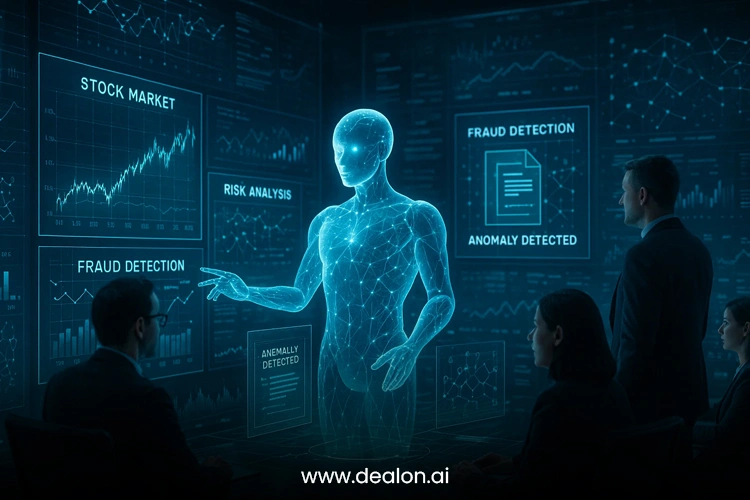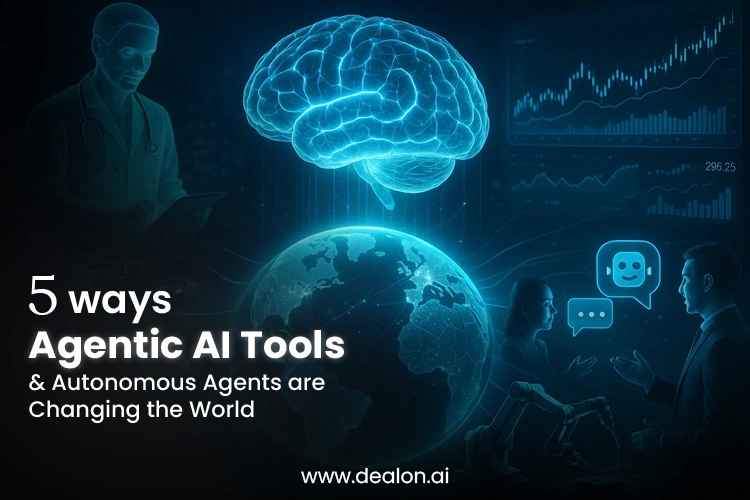With the digital evolution of the world, Agentic AI and Autonomous Agents are the most promising domains poised to change the world as we know it. These intelligent systems are capable of making autonomous decisions, whether it is problem-solving or completing tasks on their own: they are redefining the operational paradigm of businesses at both consumer and inter-operational level touchpoints. Agentic AI being deployed is no longer confined to the boundaries of science fiction; it is now a palpable phenomenon radically changing the positive correlation of healthcare, finance, transport, manufacturing, customer service, and many more. These AI tools aid in increasing efficiency, decision-making, and productivity while eliminating human operational touchpoints.
The ability of AI to not only automate mundane tasks but also conduct intricate analyses at a microsecond and tailor to the new paradigms of the ever-changing work environment is what is at the crux of this entire phenomenon. Agentic AI tools are capable of endlessly and exhaustively learning from large sets of data to a level where they are able to detect patterns and divergent responding conditions that go beyond a human being’s reasoned outlook. Whether it is Predictive analytics in finance, Autonomous vehicles in transport, or AI-driven chatbots representing Customer Services, we are entering an age where the Agentic AI tools will make high operational excellence a norm while decreasing risks and increasing the barriers to growth.
The scope of their intelligent automation agents is remarkable. It spans from supply chain networks to personalized healthcare. And the more sophisticated these AI systems become, the more innovation and efficiencies they will create. The emergence of agentic AI and self-sufficient systems is more than a change of technology: it is a framework revolution that will transform business processes and consumer interactions worldwide. This blog looks at some of the more positive ways AI is helping to reshape industries and prepare them for a more efficient and intelligent future.
Also Read: Building the Future: The Unexpected Role of AI Tools in Construction
1. Enhancing customer experience with autonomous service agents

There is no doubt that the success of any business rests with customer service, but the historic approach is now failing as customer expectations become more challenging to meet. The agent is the weakest link in the chain of meeting customer service challenges. More complex issues that arise when businesses expand and customer expectations grow will, to some extent, always have to be resolved by human agents. With agentic AI and autonomous agents, it is now possible to reconfigure customer service systems to provide personalized, efficient, and scalable customer service that is free from any human contact for the fundamental processes and even some of the most complex ones.
In the retail, telecom, and banking industries, for example, the use of autonomous service agents, powered by natural language processing (NLP) in conjunction with various machine learning (ML) algorithms, can resolve even fundamental difficulties posed by clients, manage complaints, and attend to requests for suggestions. All of these excellent AI-driven tools mimic humans in the way they communicate, albeit at greater speeds, with more accuracy and greater consistency. As an instance, AI chatbots and similar tools are able to respond to and process customer inquiries at any time, tailoring responses to user needs and taking geography and time of day into account.
Given the operators’ capacity for autonomous functioning, one of the more handy features of these systems is the ability to learn from each interaction. Focusing on a single customer’s behavior patterns enables these AI systems to harness the machine learning capability to craft responses tuned to a user’s unique requirements literally. For instance, AI customer support agents are able to keep track of past interactions with clients and use those records and memory recall to give quicker and more efficient responses—seamless support by avoiding overlap and repetition.
In retail, products can be suggested, purchases can be completed, and real-time information can be provided about stock availability through AI-driven agents. In banking, account access, transaction assistance, and policy-related questions can all be answered in real time. Offloading these, businesses can automate these functions and free workers for more nuanced and complex issues requiring empathy and creative problem-solving.
2. Increasing Operational Effectiveness in Manufacturing and Supply Chains
Operational efficiency is pivotal in gaining a competitive advantage in manufacturing and supply chain management. In the past, and in the absence of technological digitization, human workers were put in charge of supervision, inventory control, and the logistics of the whole system. As critical as this approach is, it is still constrained by delays in the processing systems, human errors, and the absence of real-time data. Nonetheless, the change ushered in by agentic AI tools in these sectors is profound, as real-time data-powered automated modifications through critical workflow silos change the processes.
Robots and AI systems that perform independently are increasingly common in factories and warehouses, where the autonomous machines complete sorting, packing, delivery, and inspection tasks. They use real-time supervision and data collection tools like sensors and cameras to organize their actions. For instance, one of the first companies in the automation of warehouses, Amazon Robotics, has AI-powered robots that organize control of inventory, shelf retrieval, and packaging delivery to human workers. Unlike human workers, these robots do not get fatigued and can thus operate 24/7, significantly increasing the speed and accuracy of the system.
Systems using AI technology assist with decision-making promptly within a production setting. Analytic agents are capable of inspecting production metrics, reviewing the performance of various machines, and, within any given parameters, modifying the processes of manufacturing in order to satisfy the optimal value of the output. Also, these systems are capable of calculating any possible disruptions or failures from records and, within a moment’s notice, execute plans sequentially and or modify the production lines in order to alleviate any hold-ups. Such a prediction can aid in lessening the delays, augmenting the utilization of machines, and maximizing the output.
The use of analytic agents has changed the landscape of inventory control. AI tools allow firms to manage stock levels, track stock movements, and forecast future stock levels for a given period more accurately based on past data and current marketing conditions. Automation eliminates the problems of overstocking and running out of essential materials while drastically reducing delays and waste. AI systems also fulfill the stock automatically through predefined levels, which results in unhampered production cycles and quick deliveries without supervision.
Autonomous agents within the supply chain are streamlining logistics by assessing the impact of weather, roadway, and levels of traffic congestion to calculate optimum delivery routes. AI systems reconfigure delivery timetables to mitigate the effects of unexpected delays. These tools are also able to monitor and track in real time, evaluating the delivery status, identifying and addressing issues such as damage or delay before they exacerbate into a significant problem.
3. The Role of AI in Diagnostic and Therapeutic Planning

The AI-based tools that help improve AI productivity and accuracy help in the transformation of the specialized and complex healthcare systems. The importance of AI tools in healthcare is most significant in the diagnosis and prognostics of diseases and complex systems. The use of AI in the diagnosis and prognosis of patients is one of the underdeveloped fields of the medical technology industry that offers a vast scope. With the help of big data, an intelligent agentized AI algorithm can use approximations of medical records, imaging, graphs, and non-invasive and even genetic datasets.
Radically autonomous agents have been trained to detect the faintest markers of illnesses like cancer, heart disease, and various neurological disorders to assist medical personnel in diagnosing illnesses quickly and with greater precision. AI tools are capable of comprehensively examining and evaluating enormous amounts of data.
This allows for much swifter detection and response of medical problems during illness episodes. Indeed, the AI diagnosis systems are capable of assessing a person’s medical history, genetic makeup, and lifestyle to determine the possible outcomes of a patient. This provides extensive and crucial information to physicians regarding the likely advancement of a given disease, thus aiding in the formulation of personalized treatment regimens.
AI isn’t limited to diagnostics—its effects on treatment planning and integration are also paradigm-shifting. Untethered and AI-enabled agents are capable of processing complex variables (e.g., genetic and behavioral information, one’s surroundings, and even social determinants of health) to recommend precision treatment strategies.
AI tools serve purposes beyond clinical practice, as they are now also optimizing workflows and relieving heavy workloads for medical practitioners. Other AI systems, particularly chatbots and virtual assistants, are increasingly used to interact with patients and answer queries, as well as to obtain essential medical records, further optimizing operational efficiencies within a health care system.
The use of these tools will impact patient outcomes and lower the cost of healthcare with each improvement in functionality and efficacy. Technology paired with healthcare will automate clinical and administrative activities that will aid in improving the overall service delivery and resource allocation of the healthcare systems. The use of new AI technology healthcare tools is not only improving current practices. It is also developing new systems for patient care and treatment paradigms and is likely to improve the sector even more in the years to come.
4. Augmenting Financial Decision-Making Using AI Tools

The use of agentic AI tools in the financial sector has had a direct impact on investment decision-making, risk, and compliance management processes. In the past, these financial experts used their skills, alongside market studies and historical data, to come up with solutions to the core issues in the market. This is not the case anymore! Businesses and investors are able to make real-time, accurate, data-based decisions quickly thanks to these AI-driven tools. AI instruments assess stock, market, consumer, and wide-scale financial data to recognize patterns and predict shifts in the marketplace and trends, making these decisions.
Fraud detection and prevention is yet another area that is being significantly transformed through AI. Traditional systems to detect fraud are often associated with a lack of flexibility and can be outsmarted by more advanced techniques. AI systems are more advanced because they can detect anomalies and predict potential fraudulent activities through transaction patterns. Agents can detect suspicious activities before they become more serious and therefore give companies better protection.
AI tools are increasingly being adopted for risk management in the financial sector. Financial organizations face a multitude of risks, including credit risks, operational risks, volatile markets, changes in regulations, and so forth. AI systems are able to assess and provide forecasts for possible dangers along with suggested mitigative steps by evaluating patterns in historical data, changing markets, and other relevant factors. These systems help organizations by identifying potential causes of financial losses and minimizing the exposure. For instance, AI can help financial institutions in adjusting the lending strategies by estimating the chances of default by borrowers using their financial records.
AI tools have other equally critical financial responsibilities, such as tracking and compliance with regulations. Monitoring and keeping up as well as complying with the multifaceted and sensitive changes of the financial sector is timely and burdensome. AI systems can independently follow some amendments and check the internal compliance with some other operational laws. These autonomous agents are able to scan complex sets of regulations and legal documents and flag possible compliance risks and instructions that are provided in the industry. Automating this process leads to minimizing the legal fines and operational disruptions that are encountered.
The financial industry is one of the few that have actively engaged AI in their workings, such that its future growth promises even greater importance of AI in financial services. The continuous advancement of agentic AI tools will outperform their ability to perform real-time analytics, trend prediction, market assessment, and risk management. These tools will usher in an array of innovations in service delivery, enhanced productivity, improved system security, and greater advancement flexibility.
The AI tools will assist decision-making. Increase fraud detection mechanisms, and ensure the financial industry operates in compliance with the legal and regulatory frameworks. The positive effects of this technology will provide greater responsiveness of the sector to the ever-changing demands of the market. The entire ecosystem will become more vibrant and responsive, powering a financial landscape that AI promises far more than was ever imagined.
5. Transforming Autonomous Vehicles Technology and Smart Transportation Systems
The field of transportation and mobility is currently one of the most advanced in the application of agentic AI and autonomous systems. Over the past few years, the sector has been going through enormous changes, extensively driven by the advancements of artificial intelligence. The Vision is to successfully and fully deploy autonomous vehicles, ranging from self-driving cars to delivery drones, improve the way people and goods move, and have the ability to significantly reduce the incidence of human error, enhance road safety, and boost productivity.
One of the fastest progressing and most visible applications of agentic AI technology is self-driving vehicles. AI systems are currently being put through rigorous testing for their capability to be autonomous. These AI systems are designed to operate independently of humans by utilizing an elaborate assortment of machine learning, computer vision sensors, computer systems, real-time data analysis, and sensor fusion to navigate streets and highways autonomously. AVs can identify obstacles, ascertain traffic conditions, recognize road signs, and track pedestrians, devising driving and safety decisions in microseconds through real-time data captured with radar, cameras, and LIDAR (Light Detection and Ranging).
In traditional transportation systems, the human population is responsible for a road accident percentage that often exceeds 90%. Constantly assessing road conditions, AVs are capable of decreasing the amount of human errors to an unprecedented level by alleviating the lag of human reflexes in the case of an emergency. Self-driving vehicles can instantly react to AI algorithms that can increase speed, bypass sudden road blockages, and navigate traffic with speed and precision, and can do so while observing the driving laws. AI systems also possess the capability of refining their driving decisions and increasing road safety by learning from every interaction through every driving condition.
Autonomous agents are also revolutionizing the logistics and delivery sectors alongside personal transport. Autonomous delivery vehicles powered by Artificial Intelligence, such as trucks, drones, and last-mile delivery robots, are transforming the supply chain by reducing costs and increasing efficiency.
Autonomous trucks, for example, are able to travel long distances without the need for human intervention, thus eliminating the expenses associated with long-haul logistics and solving the driver shortage problem faced by logistics companies. These vehicles, which are integrated with Artificial Intelligence, can determine the most effective routes, manage fuel budgets, ensure the safe transport of cargo, and optimize supply chains to be more sustainable and dependable.
Artificial Intelligence is also revolutionizing urban mobility by providing new ways for intelligent transport systems. Cities across the globe are pouring capital into intelligent systems that enhance traffic mobility and alleviate congestion. AI-integrated innovative systems track vehicles in real-time, thus enabling traffic managers to provide changes and traffic signals in order to improve travel speeds for congested routes. These systems improve the travel speeds of vehicles and lower fuel usage and emissions by reducing the instances of stop-and-go driving.
Autonomous vehicles really change the game when it comes to the ‘mobility for all’ concept. Automated systems aim to design transportation systems for the disabled, the elderly, and people living in remote or socio-economically disadvantaged regions. AI-powered autonomous vehicles could allow cities to offer autonomous, on-demand, driverless ride-hailing services, significantly improving the travel patterns of people who are unserved or underserved by the public transport system. With the right AI strategies, it is possible to design fully inclusive transportation systems for all.
Conclusion: The Future is Agentic AI and Autonomous Agents
The impact brought by Agentic AI and autonomous agents is already changing the face of many industries, with more effects expected. AI systems in use today are already redefining customer service, increasing organizational productivity, and innovating in health, finance, and transportation industries. The more intelligent the system, the more it is expected to maximize efficiency, safety, and the quality of decisions made. With the incorporation of autonomous vehicles and intelligent transport systems, the transportation industry is entering a new era. The more refined and integrated these systems and technologies become, the more people will change the way they move about.

